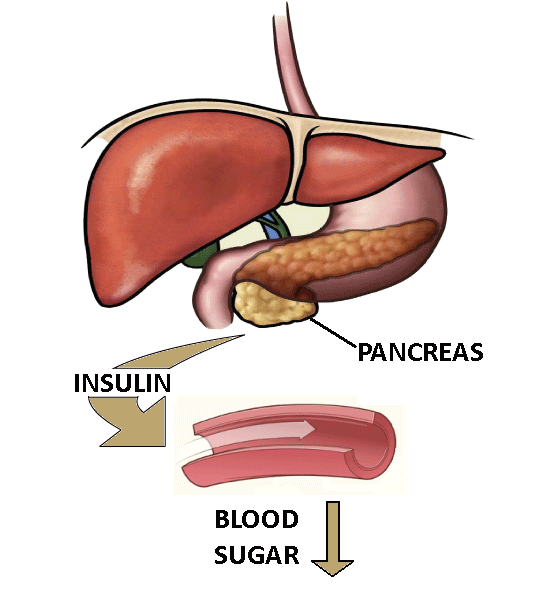We all need sugar in our diets to keep normal blood sugar levels and be healthy. The taste of sweet is one of the four basic sensations we get from food. In our diets, we tend to lean towards heavily processed sugars that have been reduced to their simplest forms. We are designed to consume sugar in the form of complex carbohydrates like those of fruits and whole grains. They provide energy and material for building living cells in our bodies. The more simple the carbohydrate the quicker we can absorb it. The quicker we absorb it the quicker we feel satisfied. Unfortunately, we hurt ourselves if we become too dependent on simple sugars for calming our hunger and emotional pain.
When we ingest carbohydrates the digestion process starts in the mouth. The enzymes in the saliva start breaking it apart into its basic components. As the molecules travel through the digestive system they are reduced to glucose. When glucose enters the blood stream the pancreas secretes a hormone called insulin. Hormones are the communicators of the body and in this case insulin goes to the cell and triggers the glucose receptors to appear on the outside of the cellular membrane. The glucose attaches to the receptors and is brought into the cell. When there is a constant stream of too much glucose in the blood the receptors lose their sensitivity. The amount of insulin the pancreas produces can no longer trigger the cells to open up to the glucose. Type two diabetics lose their insulin sensitivity and the glucose is left to wreck havoc on the body. Type one diabetic’s pancreas had never had the ability to produce enough insulin to bring the glucose to their cells. In both cases it becomes necessary, in order to maintain normal blood sugar levels, to use insulin or some form of medication from the doctor.
Many ask what are normal blood sugar levels and how does a doctor determine if they are abnormal? After a fast the glucose should run about 70 milligrams per deciliter up to 100 milligrams per deciliter of blood. Anything above 100 milligrams shows diabetic tendencies. In a blood sugar levels chart, a difference in blood sugar absorption can be seen over a period of time. Glucose is ingested after around an eight hour period of fasting. The doctors prefer blood serum over whole blood because it contains the greatest concentration of glucose. In diabetes, the blood sugar levels peak fast and never really reach normal levels. In normal blood sugar, the glucose levels have a slight peak and taper off as time moves forward. In people who exhibit pre-diabetic tendencies levels will peak higher than people who do not have a problem but peak lower than someone with diabetes. Pre-diabetics also have sugar levels that drop off slower than people who are normal. The charts are a great way to compare the different cases and determine the tendencies of the patient.
Diet can be a primary cause of high blood sugar levels but there are other causes too. Infections can spike blood sugar and certain prescription drugs can upset the glucose metabolism. Even though red wine has proven to help with the arteries, too much can upset the glucose balance. Alcohol is a form of a simple sugar. People can help prevent diabetes by doing a few simple life style changes. Walking thirty minutes a day can help increase cellular sensitivity to glucose. Eating complex carbohydrates in the form of unprocessed foods is another means of regulating blood sugar. For most people high blood sugar develops over a period of time of poor life style choices. It is never too late to start working on keeping the blood sugar levels healthy. The answer for “What are normal blood sugar levels?”, takes discipline in eating and exercising to find out as poor lifestyle choices will prevent that question from ever being answered.
